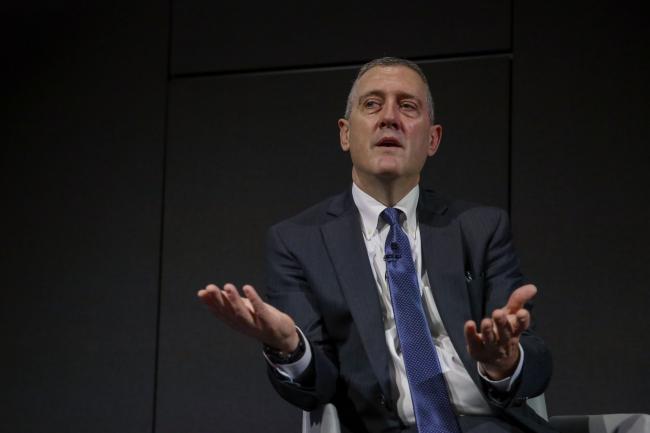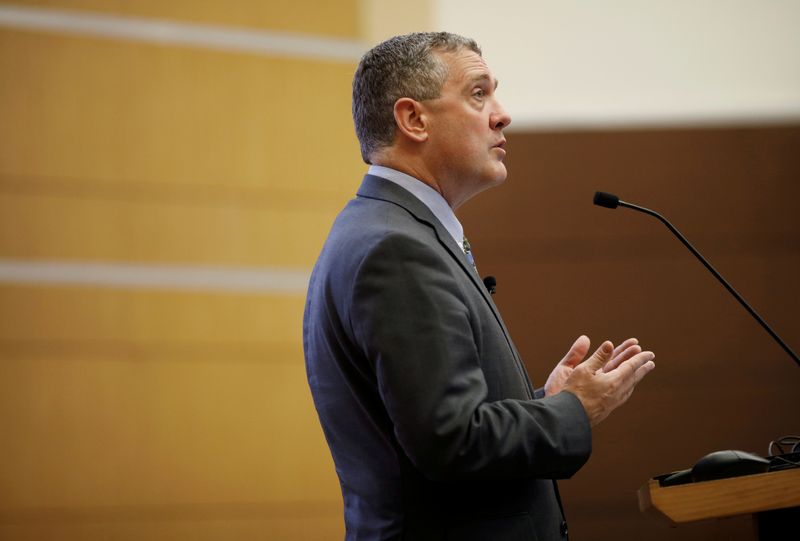(Bloomberg) -- Federal Reserve Bank of St. Louis President James Bullard said monetary policy benchmarks using “generous assumptions” suggest that the U.S. central bank may need to raise interest rates to about 3.5% to counter inflation that’s running far too high.
“One concludes that the current policy rate is too low by about 300 basis points, according to this calculation,” Bullard said Thursday in prepared remarks at the University of Missouri. That could suggest, by that measure, the Fed is “behind the curve,” he said.
The Fed raised its benchmark overnight rate by 25 basis points last month to a target range of 0.25% to 0.5% with Bullard, who favored a half-point increase, the lone dissenter.
But minutes of the March 15-16 policy meeting released Wednesday showed that “many” officials had been of the same mind and only opted for the smaller increase out of caution in light of Russia’s invasion of Ukraine. The minutes also showed that many of them also noted that one or more half-point hikes could be appropriate going forward to counter the hottest inflation in four decades.
Bullard cited a version of the Taylor Rule, a guideline developed by Stanford University’s John Taylor that uses inflation, the unemployment rate and an estimate of the neutral interest rate -- a rate neither contractionary nor expansionary -- to come up with his estimate for how high rates should go.
Markets have already incorporated Fed tightening into their pricing, with the 2-year Treasury yield trading at around 2.45%, or 1 percentage point below what might be needed, Bullard said.
“This suggests the Fed is not as far ‘behind the curve,’ although it would still have to raise the policy rate to ratify the forward guidance,” Bullard said.
Bullard said he expects growth of “a slower but still robust 2.8% pace in 2022,” despite a weak first quarter and impact from the Russian invasion of Ukraine. He said the unemployment rate may fall below 3% this year.
“The expansion is not ‘old’ and can continue for a long time,” he said.
Turning to the yield curve, however, the St. Louis Fed chief said recent inversion of parts of it could be a warning signal for growth.
“This market-based signal has been an accurate predictor of recessions in the postwar data, and so it must be taken seriously,” he said, adding there could be a number of explanations for a depressed 10-year yield including the Fed’s large balance sheet and safe-haven demand due to the war in Ukraine.
©2022 Bloomberg L.P.

